The Corinthian, 330 East 38th Street: Review and Ratings
between First Avenue & Second Avenue View Full Building Profile
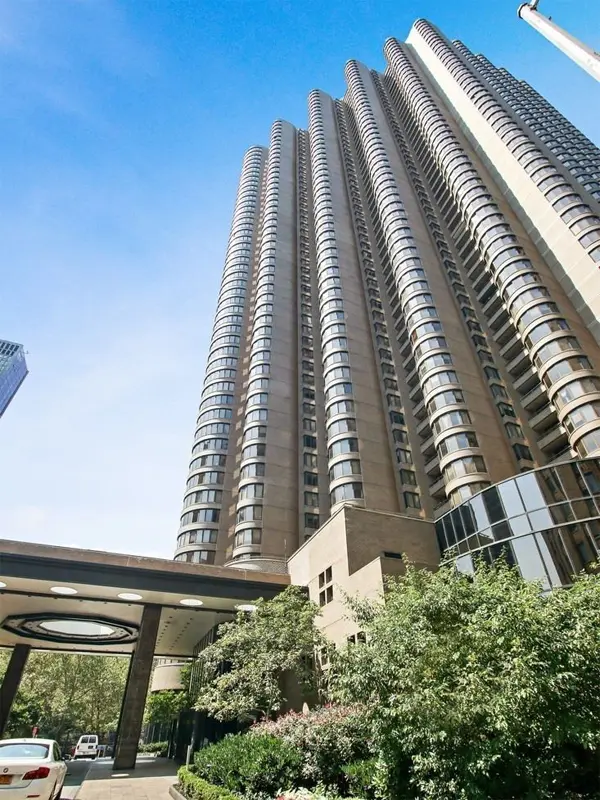

One of the city's most spectacular residential developments, the Corinthian at 330 East 38th Street has a distinctive shape of bundled cylinders that affords all the apartments very large, curved bay windows.
Built on the site of the former East Side Airlines Terminal that had been designed by John B. Peterkin in 1951, this full-block, free-standing project between 37th and 38th Streets and Second and First avenues has extensive gardens and great views.
The tower is sited close to Second Avenue, but its entrance faces First Avenue.
The building's lobby is palatial as befits a 54-story tower that contains 817 condominium apartments. The 28-foot-high-ceilinged lobby is grander than most major hotels and movie sets.
Bernard Spitzer, the lead developer, had previously built the curved apartment tower overlooking Central Park on the southwest corner of Central Park South and Seventh Avenue. Kriti Properties and Development and Peter L. Malkin were also the developers on the Corinthian, which is the major building in this Murray Hill East neighborhood.
Bottom Line
The Corinthian is a high-rise castle whose enormous, semi-circular bay windows overlook the East River and the Queens Midtown Tunnel on its own, landscaped block. In addition to its awesome views, this tower has a truly palatial lobby and many spectacular layouts.
Description
Much of the former low-rise airlines terminal building on the site was incorporated into the Corinthian, "but the portion along First Avenue was demolished to make way for what was, at 27,000 square feet, the largest residential plaza in the city," noted Robert A. M. Stern, David Fishman and Jacob Tilove in their monumental book, "New York 2000, Architecture and Urbanism between the Bicentennial and the Millennium" (The Monacelli Press, 2006).
Thomas Balsley Associates wrapped the plaza's central sloping grass lawn with a border of trees and provided areas with benches at the street corners. Opposite the entrance, a cascading semicircular waterfall fountain is around Aristides Demetrio's abstract bronze sculpture Peirene (1988) and faces a curving, skylit porte cochere that brought tenants into a ninety-foot-long lobby, the authors continued.
The asymmetrical design of the beige-brick tower by architect Michael Schimenti and Der Scutt Architects, the design consultant, is original and interesting and far more complex than its closest design "cousin," the "corn-cob" twin towers of Marina City in Chicago. Marina City is a more successful design, nonetheless. This tower is the closest New York comes to the great Lake Point Tower in Chicago, a glass tower of sinuous form that is one of the architectural masterpieces of the 20th Century.
What is particularly interesting here is the combination of the fluid, almost rippling curved forms with the very tactile masonry façade. The tower has many “discrete” balconies that are inset between the large bay windows.
The project, which was completed in 1987, is the most dominant of the high-rise group clustered around the Manhattan entrance to the Queens-Midtown Tunnel.
Normally, such a location would not be conducive to luxury housing, but Spitzer and Jeffrey Glick, the developer of the nearby Horizon and Manhattan Place high-rise apartment towers, were confident that good-looking high-rises with plenty of modern amenities would overcome qualms about such a high-traffic, out-of-the-way location.
The building has about 100,000 square feet of office space on its second and third floors.
Amenities
The building has a concierge, a doorman, a garage, a health club with a glass-enclosed swimming pool, a children’s playroom, a landscaped jogging track, and a roof deck.
It allows pets.
Apartments
The Corinthian has many unusual and dramatic layouts and some superb studios. Some studios have a 30-foot-living room with the 7-window bay window and a 16-foot sleeping alcove with its own balcony.
A one-bedroom unit has a 24-foot-long living room adjacent to a 16-foot-long bedroom with a balcony and a bathroom placed at an angle and also a large semi-circular office/sleeping alcove off the long entrance gallery.
The L line on floors 5 to 54 is a very impressive one-bedroom that has an 11-foot-entrance gallery with three curved corners that leads to an enclosed kitchen and windowed dining room and a 23-foot-long living room with one slightly curved wall. This apartment, which faces the East River, has a bedroom with a balcony.
An 11th floor apartment facing north has an entrance foyer that leads past an enclosed kitchen on one side and many closets and a bathroom on the other and then opens onto a small dining room with a balcony next to a 19-foot-living room with two curved windows and a 12-foot-office and 13-foot sleeping area.
One of the more spectacular apartments has an entrance foyer that leads to a 14-foot-long, gallery curved on four sides that leads to a 30-foot-long living room with very large curved bay windows at either end. The unit has also an enclosed kitchen, a master bedroom with a curved wall and balcony and a second bedroom.
Apartment 1J has a 10-foot-long entrance gallery that leads to a 29-foot-long living room with 13-foot curved bay window. The apartment also has two bedrooms with balconies and two other larger bedrooms with large curved corner windows.
A four-bedroom apartment on the 39th floor has an entrance foyer that leads north to a very large, semi-circular living room with a 15-sided bay window and the foyer also leads northeast to a very large dining room, curved at both ends, with 18-windows.
History
Robert Campbell of the Boston Globe said that "What's wrong with the Corinthian is that it is a leech on the body of New York," adding that "Grabbing amenity from everything around it, it offers the city nothing in return...only empty greenery, blank walls, tight security and a tower that is hideously, overwhelmingly, out of scale with those 'townhouse lined streets' bragged about in the sales brochure."
Mr. Campbell's description was not fair when he wrote it and even more so after the city’s planners approved in 2007 a gigantic, high-rise redevelopment project by Sheldon H. Solow nearby along First Avenue on two former Con Edison sites along the East River. Solow cleared those sites but had not begun construction in 2012.
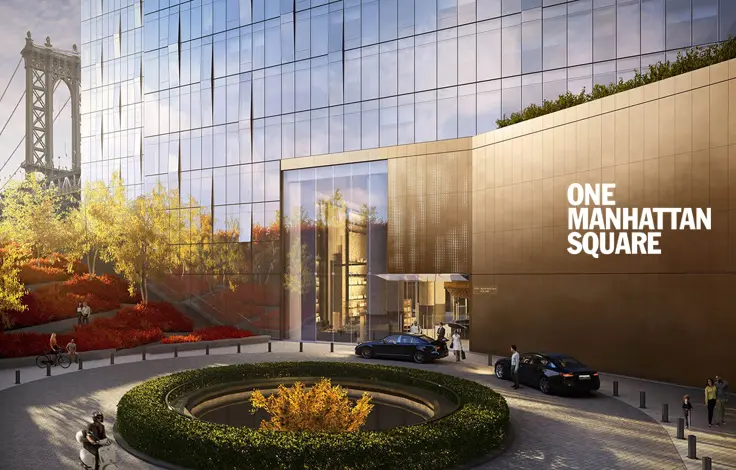
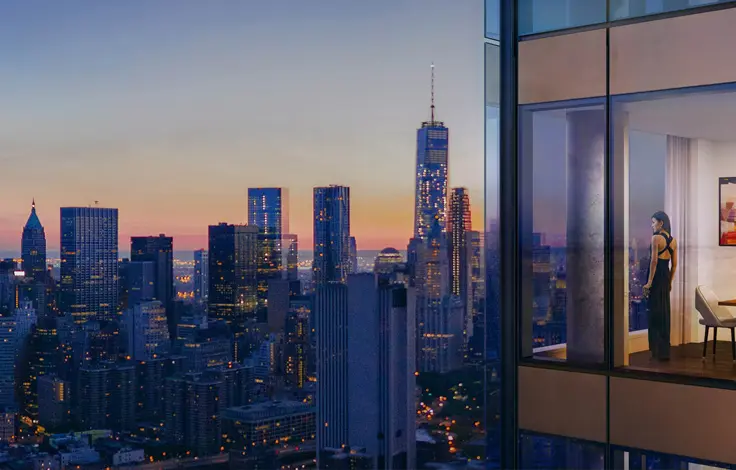
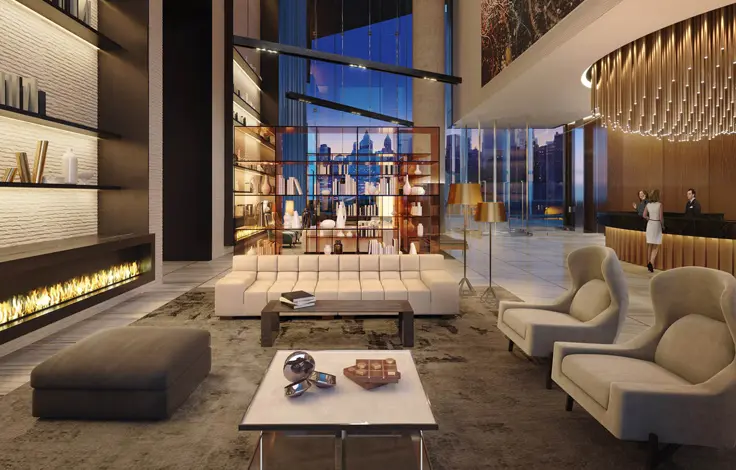
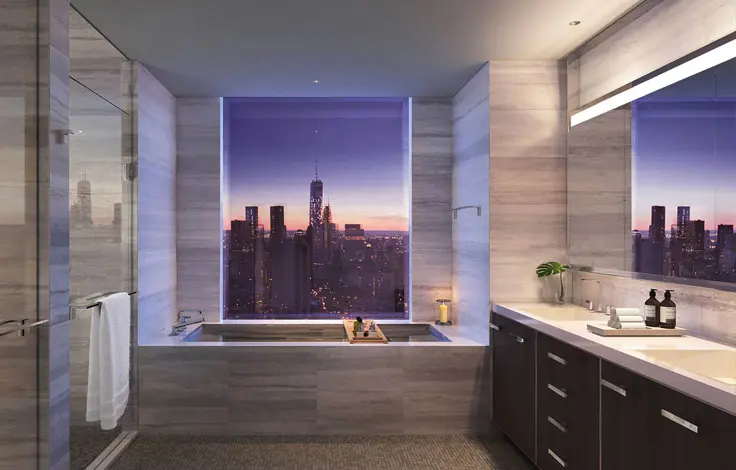
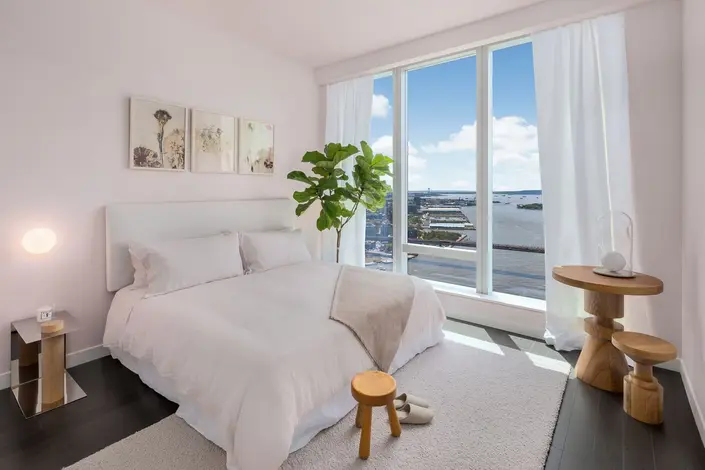
 6sqft delivers the latest on real estate, architecture, and design, straight from New York City.
6sqft delivers the latest on real estate, architecture, and design, straight from New York City.
